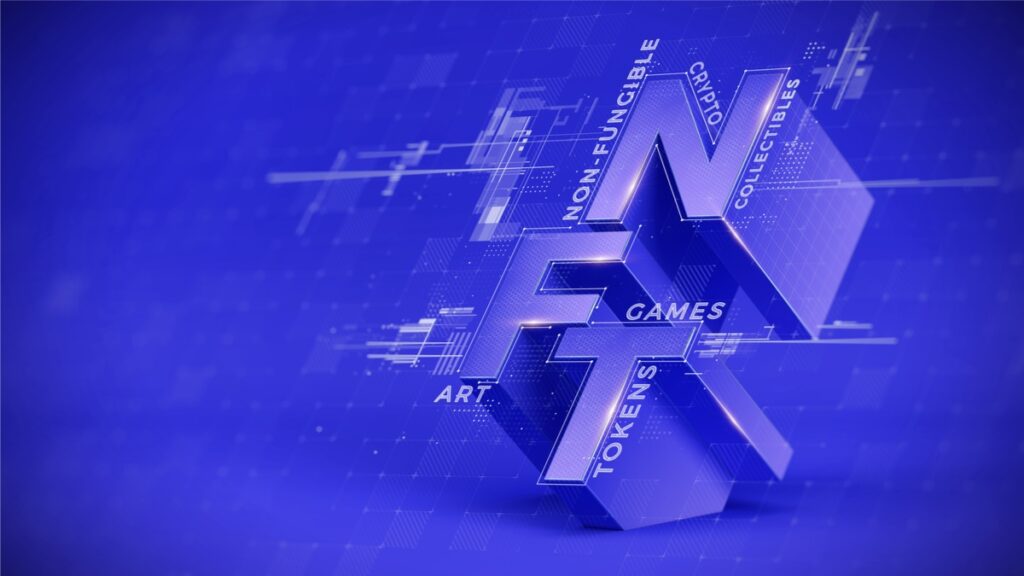
When talking about Non-Fungible Tokens – NFTs – many imagine ugly pieces of art sold for millions of real-world dollars. The disruptive and transformative potential uses for NFTs goes far beyond a picture of a Greedy Goat or a Perky Penguin with the promise of riches, passive income, or what have you. What an NFT is fundamentally is a secure method of verification, and that small fact alone makes them game-changers across many industries and everyday life.
NFTs are cryptographic tokens that use blockchain technology to verify their ownership and cannot be replicated. They are used to represent digital and real-world items such as artwork and real estate, allowing these assets to be traded with a slight possibility of fraud.
Despite the crypto market crash and the NFT market slump that came with it, we are still seeing NFTs make huge strides in the public eye. Let’s take a look at the most common uses for NFTs today and what those applications might look like in the future:
Uses for NFTs in Art
Let’s get the obvious one aside. While most NFTs aren’t known for looking ‘good,’ at least in the traditional sense, they are an excellent way for artists to make a living off of their art and gather a loyal fanbase while they do it. Having the addition of a smart contract attached to a piece of art is an excellent way to add some functionality to an otherwise purely aesthetic. Earning money from initial sales and all royalties that follow from future sales is any artist’s dream come true.
Of course, they will have to maintain the value of their art through community building, social media, and continued growth to maintain its perceived value, so it’s not exactly what you would call a ‘passive income,’ but then again, what is.
Even as NFT projects continue to see adoption and traction in 2022, the landscape will inevitably keep changing.
Tokenization of Real-World Items
One of the most common uses of NFTs is as digital representations of real-world items, and in an increasingly digitized world, such a technology is the logical next step. From real-estate listings to musical albums and smart contracts that help manage real world
The use of NFTs would allow a scalable use of trustless secondary marketplaces across many service industries.
Digital Identities, Credentials, and Medical Records
Decentralized Identifiers, or DIDs, are some of the most common uses of NFTs. People, organizations, and any other entities can solidify their identities and avoid fraud through their Web 3 dealings through the use of NFTs.
Digital identifications are at the heart of the future internet, and blockchain-enabled NFTs are the best way to do it. Imagine being able to pay tax, order goods, renew your license and handle subscriptions, and much more, all with one unhackable verification method.
Your medical health life will also be made easier by the advent of NFTs. Doctors can now issue NFT birth certificates upon birth, and that NFT would represent the lifelong identity that they can use for all their medical records. Medical professionals can then access this information whenever needed, such as when retrieving blood type and
Academia can be among the best uses of NFTs in the real world, with the same applications as medical records, except it would be used during job applications, certification, and proof of attendance in college or school.
A New Dimension for Gaming
Perhaps the most practical use for today’s NFT scene, which is still in its infancy, digital collectibles such as those in “Play-to-Earn Games” like Axie Infinity, are a common use case. NFTs are a perfect fit for the gaming industry.
With the digital identification model, players can use NFTs to verify their earnings and secure their winnings in video games.
Since NFT objects in games can have varying degrees of rarity, NFTs make trading in games simpler, which can also raise the value. Due to the absence of an intermediary and the instantaneous nature of blockchain transactions, NFT owners won’t need to worry about frauds and scams. This creates more opportunities than ever before, including the ability to buy weapons or other equipment that has already been tried out by actual users and for both buyers and sellers to benefit.
Enabling cross-platform compatibility for NFT Game players are more motivated to continue playing a game if they already own characters or objects inside it, thanks to NFTs, which provide game devs with another chance to grow their brand and generate income.
Uses for NFTs Supply Chains
Many goods and items, particularly those in the food sector, have a problem when it comes to verifying their provenance, the contents within the packaging, and the source of supply. NFTs may be tied to a product via the blockchain, giving it a tamper-proof NFT identity.
Businesses can also find many convenient uses for NFTs for tracking their items from production through shipment and delivery way down the pipeline. Customers can then see what they are paying for, and the supply chain of a business is kept transparent.
In Conclusion
New and exciting creations such as NFTs are still young and volatile technologies, and no doubt, tremendous and turbulent changes are coming down the road. Once something is created. However, it cannot be uncreated or forgotten. NFTs have seen such a significant adoption in such a short time that we can rest assured they are not going anywhere.
We will continue to see more uses for NFTs expand and evolve to reach the lives of everyday individuals going about their business. NFTs holds the potential to make various services easier to use, and make more transactions transparent, especially when it comes to tangible ownership of the real estate, artwork, ideas, concepts, and the like.
More advancement in this area is expected in the upcoming years at a rate that will transform everyday life for the common person.